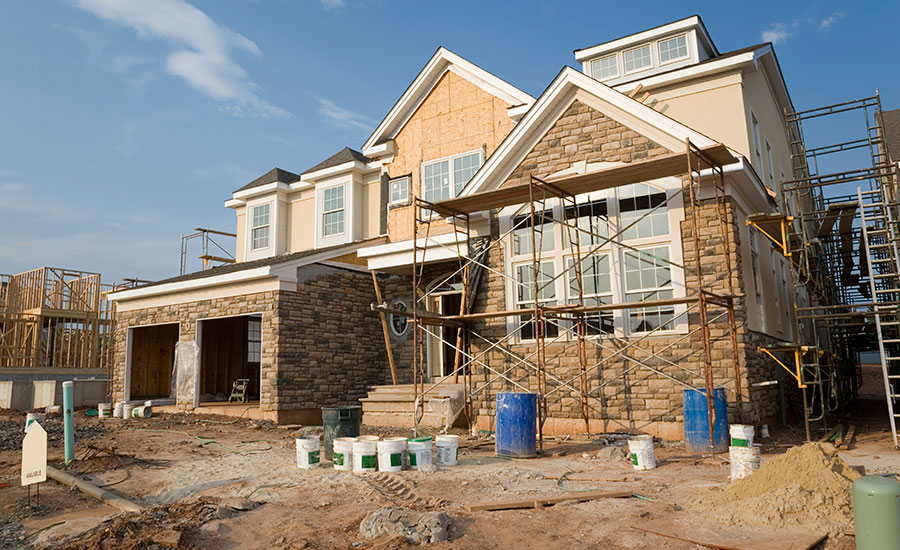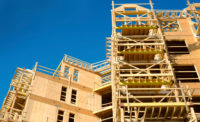Though Home Building is Concentrated in Millennial Areas, Pace Lags Rest of Nation
The pace of housing production in areas with the greatest concentration of millennials lags the rest of the nation, according to the latest quarterly National Association of Home Builders (NAHB) Home Building Geography Index (HBGI).

The majority of single- and multi-family housing production in the U.S. is occurring in counties with the greatest concentration of millennials. However, in a warning sign that the housing affordability crisis persists and more construction is needed, the pace of housing production in areas with the greatest concentration of millennials lags the rest of the nation, according to the latest quarterly National Association of Home Builders (NAHB) Home Building Geography Index (HBGI).
According to the NAHB, its third quarterly release of the HBGI sheds new light on the housing market by focusing on where millennials live. “Millennial counties” are defined as geographic areas where at least 26% of the population consists of this growing demographic group. These millennial counties are diverse, representing major metro areas including several California markets, Seattle, Portland, Boston, and Washington, D.C., as well as more rural counties in places such as Ohio, Kansas, and Missouri.
The HBGI found that those counties with elevated millennial shares account for 62% of the entire U.S. population. These counties also account for 59% of single-family home building nationwide.
“On the surface, these numbers look similar, but you would expect the single-family construction share to be higher in millennial intensive areas, which tend to feature greater amounts of household formation and population growth that require additional housing,” said Robert Dietz, NAHB chief economist.
“The HBGI highlights the ongoing challenge of housing supply, particularly for younger households seeking affordable rental housing or attempting to gain a toe-hold on the homeownership ladder,” said Greg Ugalde, NAHB chairman and a home builder and developer from Torrington, Conn. “While counties that have greater concentrations of millennials are where most of the single-family and multifamily construction in the U.S. is occurring, those same areas have recently seen relatively weaker growth rates for home construction.
“The new NAHB HBGI data shows two consecutive quarters of declines for single-family construction in counties with larger numbers of millennials, the very areas that most need additional home construction. These localities are more acutely affected by supply-side constraints due to the greater demand for inventory resulting from the relatively younger population that resides there.”
Meanwhile, multi-family construction in millennial counties—which accounts for 80% of all apartment activity nationwide—picked up in the third quarter, though the improved growth rate was slower than the nationwide pace. “The outsized concentration of multifamily construction in areas with a large proportion of millennials is not a surprise, but it is also a reminder of the mismatch between housing wants and housing availability that is challenging the for-sale market,” said Dietz.
Other findings in the third quarter HBGI include:
- Growth in single-family construction was insufficient to keep pace with demand in the third quarter of 2019, continuing along a weaker trend due to the housing downturn from last year.
- Apartment construction is leveling off nationally but spreading out geographically, as multi-family building showed some gains in less densely populated areas, such as small towns and rural counties.
- Apartment construction in large metro core and large metro suburban areas rebounded in the third quarter, reflecting the highest growth rates in these regions in two years.
- Weakness in manufacturing areas continues to limit home construction. Manufacturing counties’ share of multi-family home construction decreased by 0.5 percentage points to 6.3%, while single-family construction declined at a faster rate in such areas compared to non-manufacturing areas.
- A slow shift of single-family construction from close-in suburbs to exurban locations continues due to land and lot availability and cost. This market environment, made worse by inefficient zoning practices and regulatory burdens, will continue to create a mismatch between where housing demand is growing and where housing supply can be affordably realized.
Additional details are available at www.nahb.org.
Looking for a reprint of this article?
From high-res PDFs to custom plaques, order your copy today!







